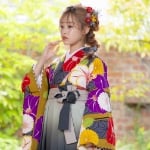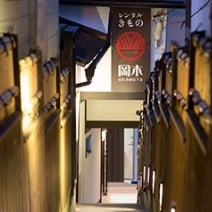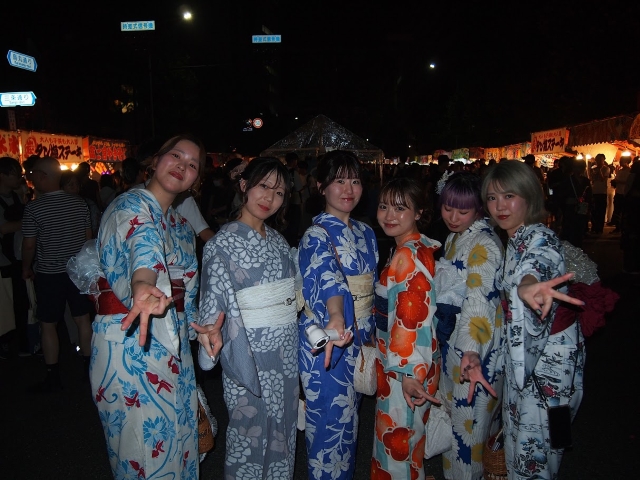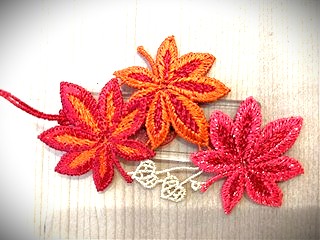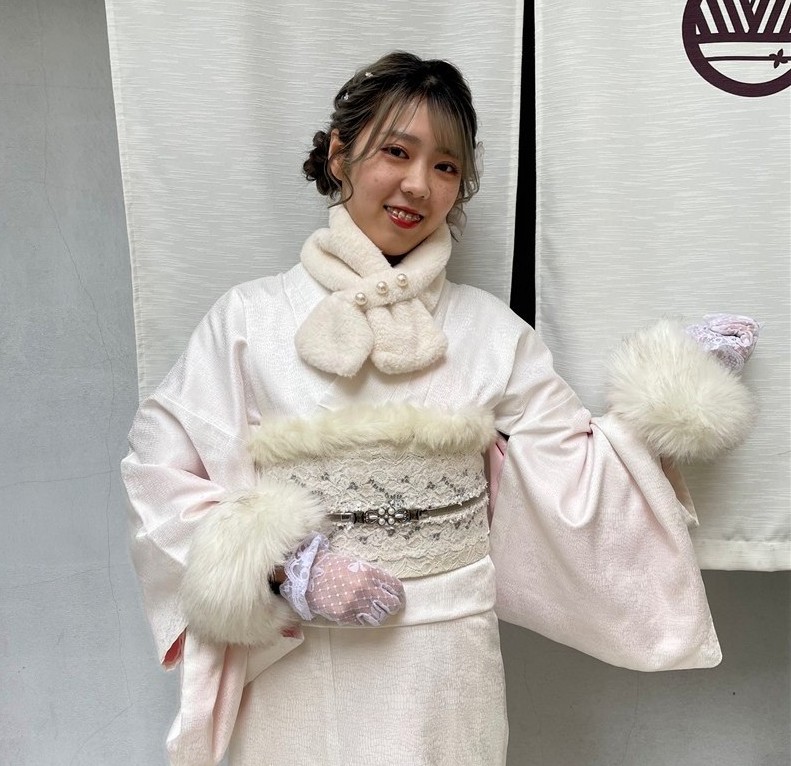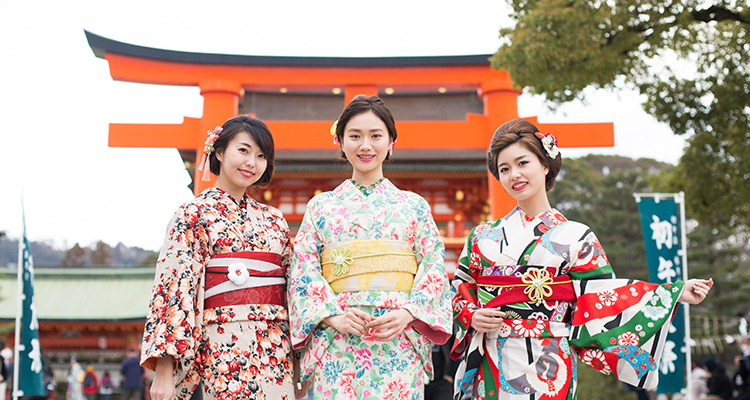
special fearure・column
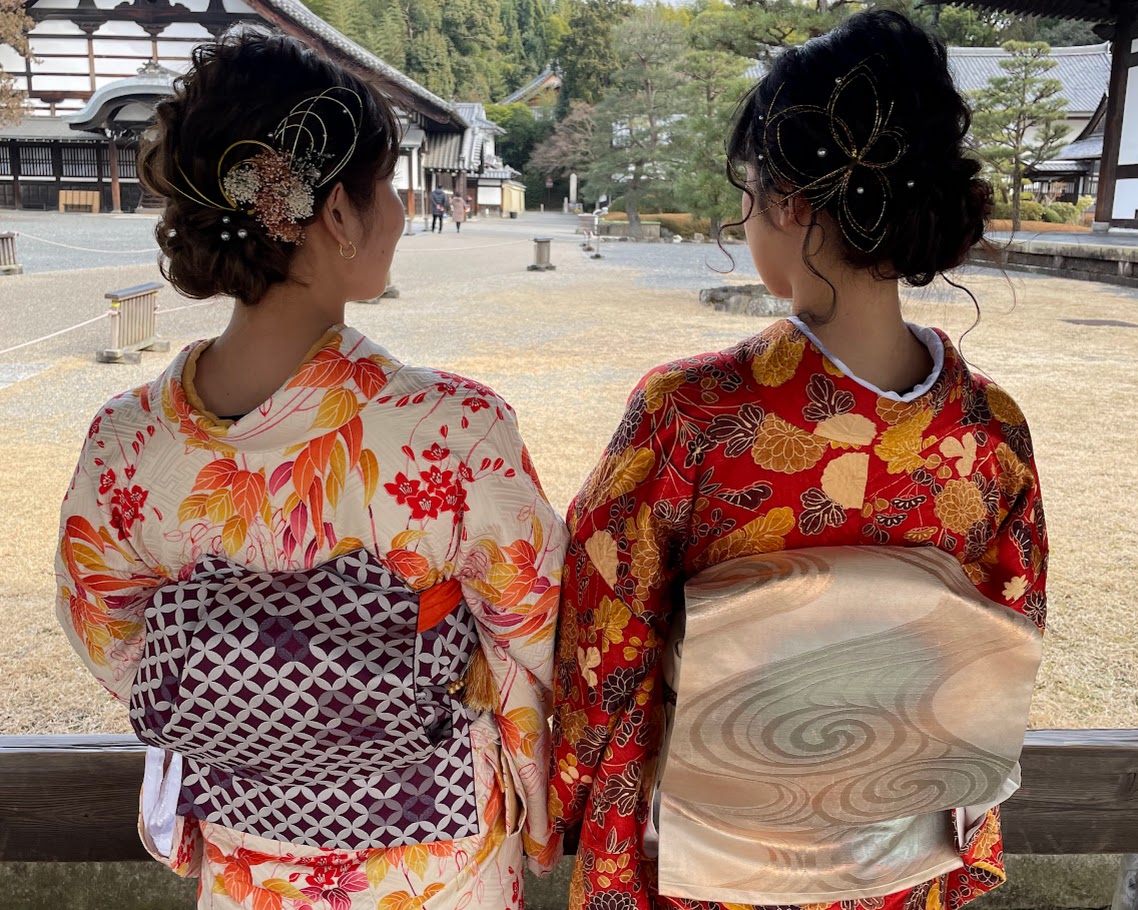
What is a Nagoya Obi? A Complete Guide from Its History to Styling Tips!
- What is a Nagoya Obi...?
- The History of the Nagoya Obi
- Types of Obi
- Maru Obi
- Fukuro Obi
- Pre-tied Nagoya Obi
- Hanhaba Obi
- Other Types of Obi
- Kimono Coordination Special
-
- Elegant Coordination
- Chic Coordination
- Cute Coordination
- Glamorous Coordination
- DECOCO Nagoya Obi
- Summer Nagoya Obi
- Ro
- Sha
- Ra
- Hemp
- What is the Season for Wearing Summer Obi?
- Yukata Nagoya Obi
- Creative Nagoya Obi Knots

What is a Nagoya Obi...?
A Nagoya obi is a type of obi that offers a more casual and stylish look compared to the formal fukuro obi.
There are several types of Nagoya obi, and the way they are sewn and the materials used can vary depending on the occasion they’re worn for.
Explaining every type in detail would be quite extensive, as there are so many and the world of obis is incredibly deep.
So in this article, we’ll keep it simple — introducing the basic types and history of the Nagoya obi, along with some cute and cool styling ideas, plus outfit suggestions to match seasonal events! ♪
The History of the Nagoya Obi
The history of the Nagoya obi dates back to the Taisho era (1912–1926).
It is said that Haruko Koshihara, the founder of Nagoya Girls' School (now Nagoya Women's University), designed a simplified version of the traditional fukuro obi.
She created a shorter obi that could be tied in a single-layer otaiko knot instead of the standard double-layer style, making it much easier to wear.
Because this style was invented in Nagoya, it came to be known as the “Nagoya obi.”
It is believed that the Nagoya obi became widely popular after the Great Kanto Earthquake in 1923 (Taisho 12), when people began seeking more practical and easy-to-wear clothing options.
Types of Obi
There are four main types of obi: maru obi, fukuro obi, Nagoya obi, and hanhaba obi.
Each type has its own characteristics and purposes, so let’s take a closer look at what makes each one unique!
If you’re not quite sure about the differences between them, this is a great chance to get familiar with the basics!
Maru Obi
A maru obi is made by folding an extra-wide piece of fabric—about twice the width of a regular obi—in half lengthwise, with an inner lining inserted for structure.
One of its key features is that it is fully patterned on both sides, so the design remains visible no matter how it is tied.
Among all types of obi, the maru obi is considered the most formal and prestigious.
It often features luxurious designs embroidered with gold or silver threads, and with the added core inside, it tends to be quite heavy—another characteristic of this type of obi.
Since the introduction of the more practical fukuro obi, maru obi are now rarely worn and are typically reserved for highly formal occasions such as bridal wear.
Fukuro Obi
The fukuro obi was created to address the main drawback of the maru obi: its heaviness.
It is made by sewing a patterned front fabric and a backing fabric together like a pouch, allowing designs to appear on both sides.
Lighter and easier to tie than the maru obi, the fukuro obi is commonly used as a formal obi.
Many feature luxurious embroidery and are worn with formal kimono such as furisode and tomesode for weddings, funerals, and other ceremonial occasions.
Pre-tied Nagoya Obi
There are several types of Nagoya obi, some of which are designed to make tying the otaiko knot easier, even for those who are new to wearing kimono.
While Nagoya obi are generally suited for more casual occasions than the fukuro obi, certain patterns and designs allow them to be worn in semi-formal settings as well.
Hanhaba Obi
As the name suggests, the hanhaba obi is about half the width of other types of obi.
One of its key features is that it can be worn without additional accessories like obijime (decorative cords) or obiage (obi scarves).
Many hanhaba obi come in designs called zentō-gara, where the pattern covers the entire length of the obi, or in plain solid colors.
It is the most casual type of obi and is mainly worn with yukata.
Other Types of Obi
So far, we’ve introduced the three most commonly worn types of obi today: fukuro obi, Nagoya obi, and maru obi.
However, there are actually many other types of obi as well, such as:
Zentsū obi (fully patterned obi)
Rokutsū obi (partially patterned obi)
Share fukuro obi (stylish fukuro obi)
Kyō fukuro obi (Kyoto-style fukuro obi)
Fukuro Nagoya obi (a hybrid style)
Hitoe obi (single-layer obi)
Including the three types we’ve already discussed, there are nearly ten different varieties of obi. Each has its own level of formality and occasions for wearing.
Basically, if you can differentiate and use the fukuro obi, Nagoya obi, and maru obi, you’ll be well-prepared for most events and ceremonies you may experience.
Kimono Coordination Special
Unique Style Coordination
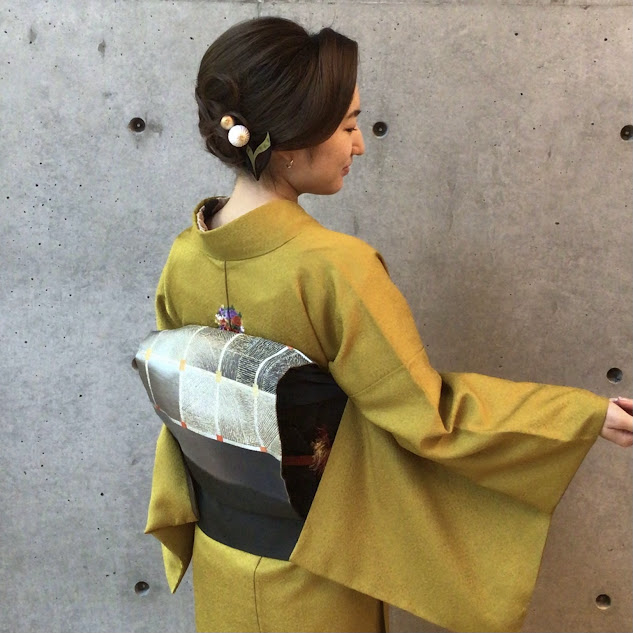
Bold-colored kimonos paired with striking obi or fully patterned obi as accents create a truly stunning look together. 💓
Elegant Coordination
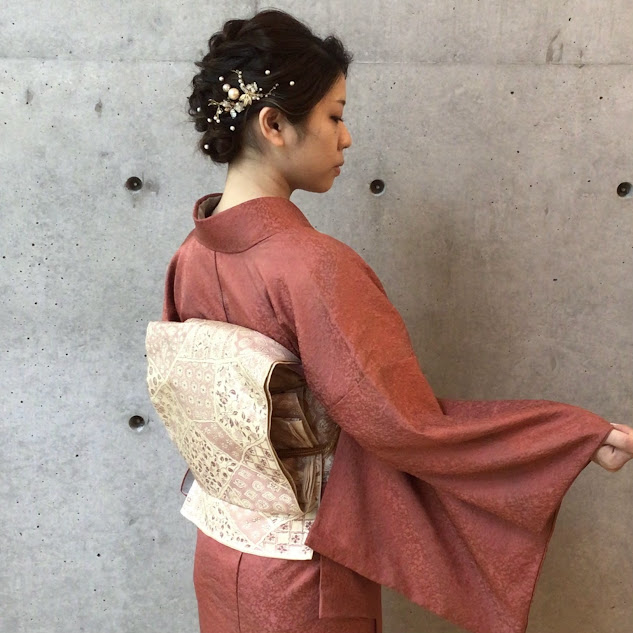
Matching your obi to the color of your kimono creates an elegant and cute look!
Chic Coordination
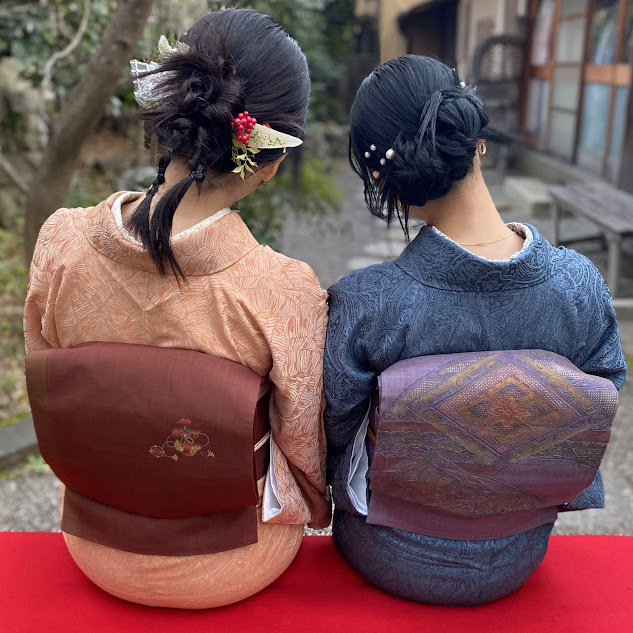
Putting together a chic look is also really cool!
Cute Coordination
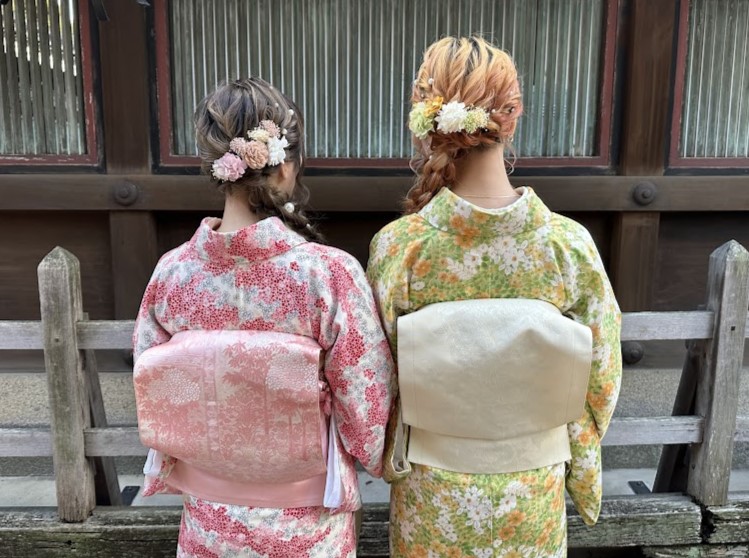
Pairing adorable kimonos with accessories in a single tone creates a cute and harmonious look. 💚
Glamorous Coordination
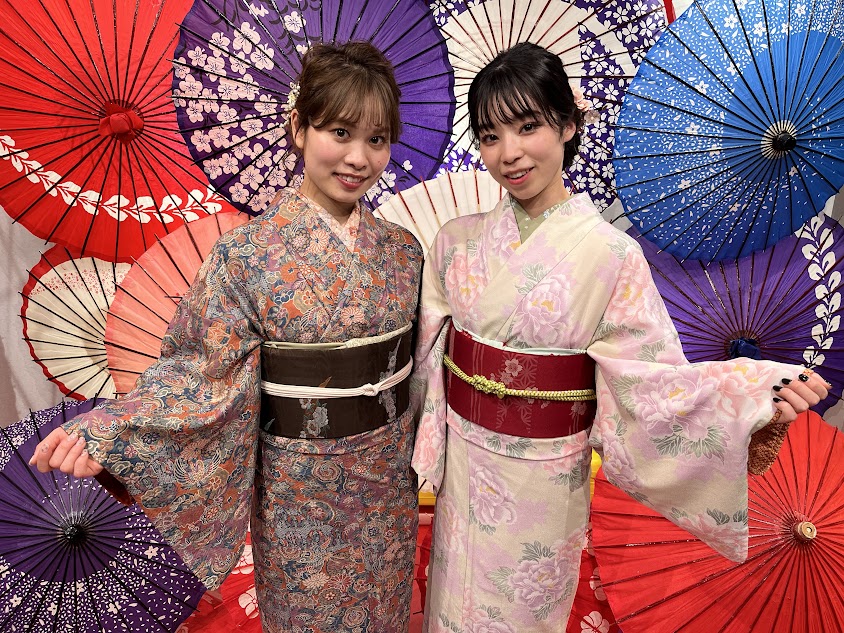
Choose an obi in a bold, standout color to make your kimono look even more vibrant✨
You’re sure to turn heads!
DECOCO Nagoya Obi

At Rental Kimono Okamoto, you can pair a Nagoya obi with our DECOCO Plan, which includes unlimited lace kimono accessories, lace trims, pearl decorations, and more!
Even a simple, subdued Nagoya obi can be transformed into an adorable look when styled with lace and accessories❣️
Of course, Nagoya obi look great with lace kimono, but you can also create a more mature and elegant style by pairing a pure silk kimono with lace details around the collar.
It’s a cute and sophisticated look that blends tradition with modern charm!
Summer Nagoya Obi
Did you know there are special kimono just for summer?
Among them are styles made from ro and sha, traditional summer fabrics known for their light and airy texture.
In fact, there’s a wide variety of materials used for summer kimono, which can make it a bit confusing when choosing the right fabric or knowing when to wear it.
However, that variety is also part of the fun—you can enjoy coordinating your outfit freely depending on the season, occasion, and weather!
Ro
Obi with ro weaving, featuring distinctive ro-me (sheer woven lines), are available in both fukuro obi and Nagoya obi styles.
Ro-me refers to a weaving technique where some of the warp threads are twisted to create small, evenly spaced sheer openings in the fabric.
Depending on the direction of these openings and the pattern, the fabric can be classified into types such as tate-ro (vertical ro) or kawari-ro (variations of ro).
Sha
Many formal fukuro obi are made using sha-woven fabric with a strong sense of transparency, often layered with techniques such as kara-ori (a decorative brocade weave).
There are also Nagoya obi made from mon-sha—a patterned sha fabric—where the design is created by combining various weaving methods such as plain weave (hira-ori) and sukui-ori (pattern-picking weave).
Ra
Ra belongs to the same category of “karami” (twist) weave as sha and ro, but unlike them, it uses an odd number of warp threads—such as 3, 5, or 7—that intertwine with each other.
This unique weaving method creates a mesh-like pattern that resembles a net.
Because of this complexity, ra cannot be produced on ordinary looms.
Hemp
Obi made from ramie (hemp) fibers come in both hassun (approximately 24 cm wide) Nagoya obi and kyusun (approximately 27 cm wide) Nagoya obi with a core, depending on the quality and thickness of the yarn used, the weaving density, and the thinness of the fabric.
The cool, crisp texture unique to hemp is very comfortable during the hot summer months.
The kyusun Nagoya obi with a core has less transparency, allowing you to enjoy its refreshing feel from early warm seasons throughout the summer.
On the other hand, the hassun Nagoya obi without a core offers a natural coolness that the material itself guarantees.
What is the Season for Wearing Summer Obi?
When it comes to the season for wearing summer obi, just like with summer kimono, there are various traditional rules that people often worry about. However, unless you are dressing for a very formal occasion, you don’t need to be too concerned.
Basically, summer obi are typically worn from June through mid-September. Rather than strictly following specific calendar dates, the key is to wear them with appropriate kimono types such as hitoe (unlined) or lightweight fabrics.
In the past, for example, it was said that hemp should be worn only in July and August. But with recent changes in climate, some people now enjoy pairing a lined hemp 染九寸帯 (some kyusun obi) with unlined kimono as early as late May for casual wear.
Just like with kimono, it’s perfectly fine to decide based on how the weather feels.
Yukata Nagoya Obi
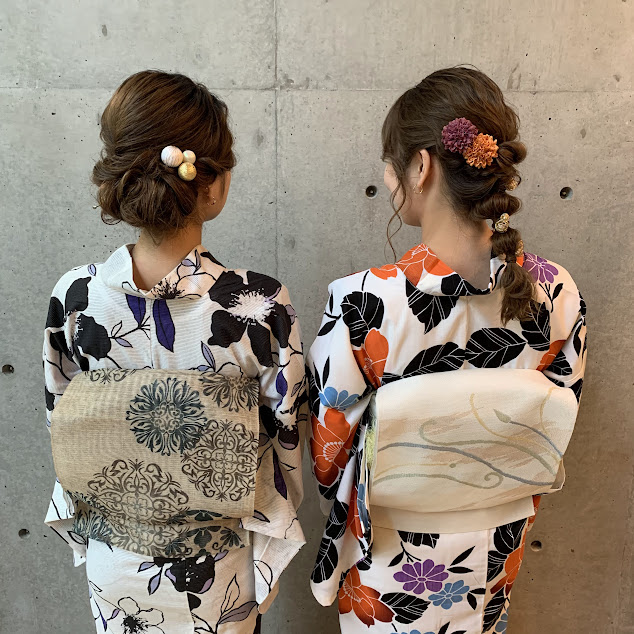
Many people choose to wear a Nagoya obi with their yukata for summer events like festivals!
Compared to the hanhaba obi, the Nagoya obi offers a more mature and refined look, making it a great choice for adult women.
Although it’s a yukata, we also recommend wearing a juban (under-kimono) and tabi socks to style it more like a formal kimono.
Creative Nagoya Obi Knots
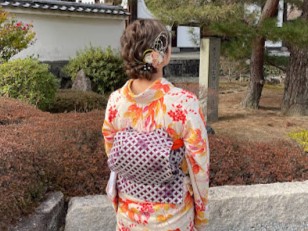
The playful “cat ear” style of creative obi knot is also super cute!

How did you like this introduction to the Nagoya obi?
From its history and various types to summer Nagoya obi and styling ideas, we’ve seen that the world of Nagoya obi is incredibly diverse and deep.
We hope this has helped you learn a little more about Nagoya obi.
At Rental Kimono Okamoto, we offer many different coordination options, so please feel free to wear a Nagoya obi and stroll around the beautiful streets of Kyoto.
About the Author:
Rental Kimono Okamoto Fushimi Inari Store
Address: 45-1 Fukakusa Inari Nakanocho, Fushimi-ku, Kyoto 612-0807, Japan
Phone: +81-75-634-8900
Website: www.okamoto-kimono.com
Instagram: @rentalkimonookamoto
TikTok: @rentalkimono_okamoto
Facebook: Rental Kimono Okamoto
X (formerly Twitter): @okamotokimono
Lit.link: lit.link/rentalkimonookamoto
Arashiyama Shop
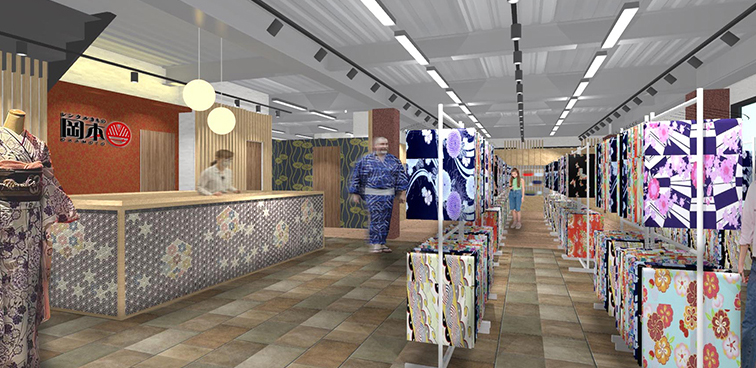
48-4 Saga Tenryuji Kitatsukurimichicho, Ukyo-ku, Kyoto 616-8374, Japan
Phone: +81-75-950-0805 / Fax: +81-75-950-0806 / E-mail: arashiyama@okamoto-kimono.com
Nearest Station: Arashiyama (Randen Line) / JR Saga-Arashiyama Station
Rental Kimono Okamoto - Fushimi Inari shop
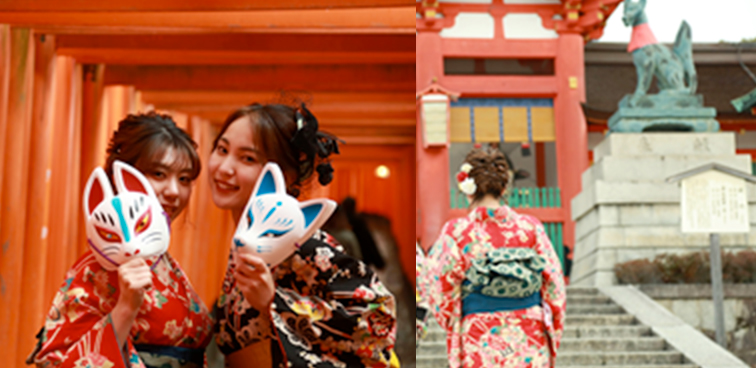
45-1, Fukakusa Inarinakanocho, Kyoto Shi Fushimi Ku, Kyoto Fu, 612-0807, Japan
Tel. +81-75-634-8900 / FAX +81-75-634-8901 / E-mail E-mail fushimiinari@okamoto-kimono.com
Nearest Station: JR Inari Station / Keihan Fushimi Inari Station
Rental Kimono Okamoto Gion Shop
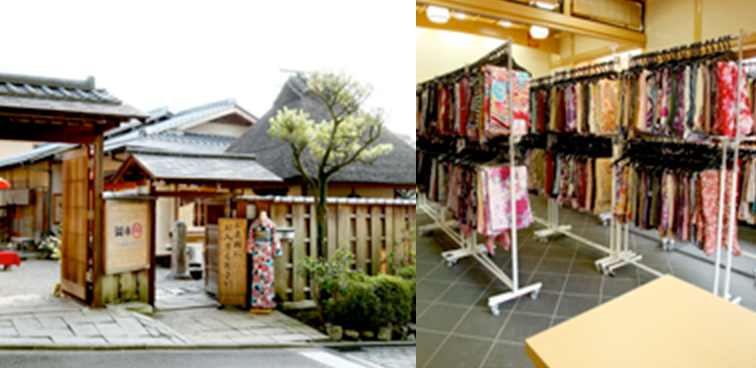
523 Washiocho, Higashiyama-ku, Kyoto 605-0072
Tel. +81-75-531-7890 / FAX +81-75-531-8383 / E-mail gion@okamoto-kimono.com
Nearest stop: City Bus Gion Stop
Rental Kimono Okamoto Kiyomizu Higashiyama Shop
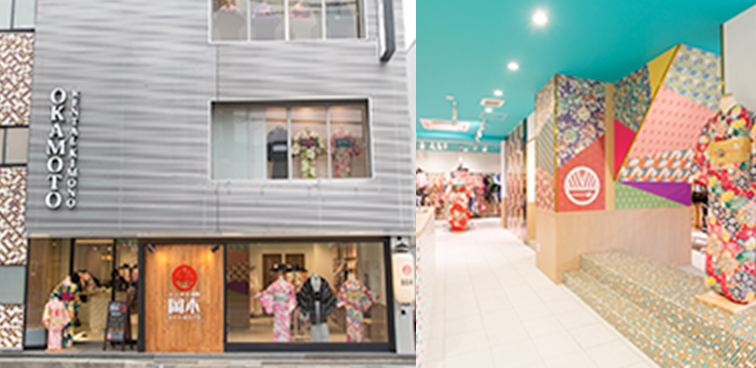
110-9 Tatsumicho, Higashiyama-ku, Kyoto 605-0855
Tel. +81-75-533-8900 / FAX +81-75-533-8910 / E-mail kiyomizuhigasiyama@okamoto-kimono.com
Nearest stop: City Bus Kiyomizumichi stop
Rental Kimono Okamoto Kiyomizu Shop
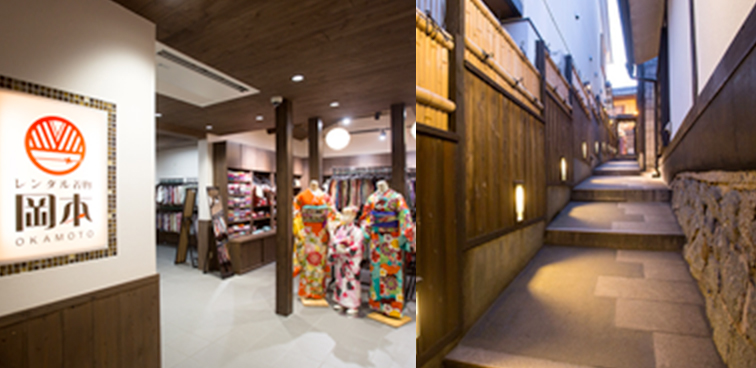
2-237-1-1 Kiyomizu, Higashiyama-ku, Kyoto 605-0862
Tel. +81-75-525-7115 / FAX +81-75-533-8960 / E-mail kiyomizuzaka@okamoto-kimono.com
Nearest stop: City Bus Kiyomizumichi stop
Rental Kimono Okamoto Main Shop
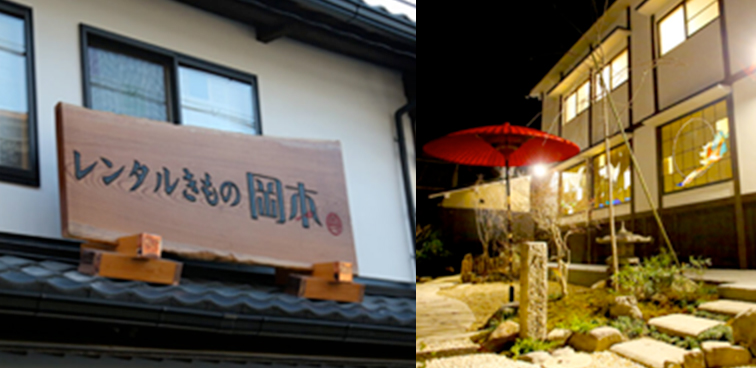
6-546-8 Gojohashihigashi, Kyoto Higashiyama-ku, Kyoto 605-0846
Tel. +81-75-532-1320 /Fax +81-75-532-1480 / E-mail honten@okamoto-kimono.com
Nearest stop: City Bus Gojozaka Stop
Rental Kimono Okamoto Yasaka Jinja Shop
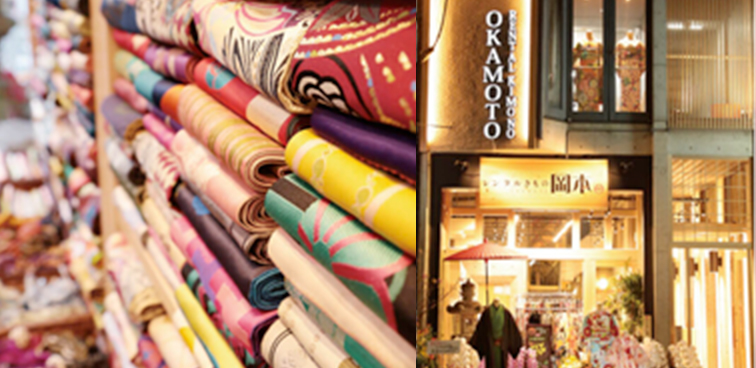
301-1 Gioncho, Higashiyama-ku, Kyoto 605-0073
Tel. +81-75-532-0510 / FAX +81-75-532-0511 / E-mail yasakajinja@okamoto-kimono.com
Nearest stop: City Bus Gion Stop
You can read a feature story about our store, Kyoto and kimono.
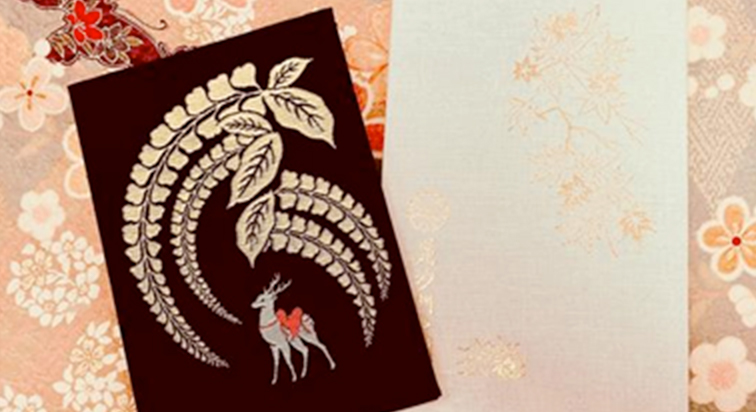
We are introducing various information on proper way of choosing kimono and others to match. Also you can access to our articles about regional, sightseeing information of Kyoto you can refert to before travelling to Kyoto.
More articles introducing the area around the shop are available here.
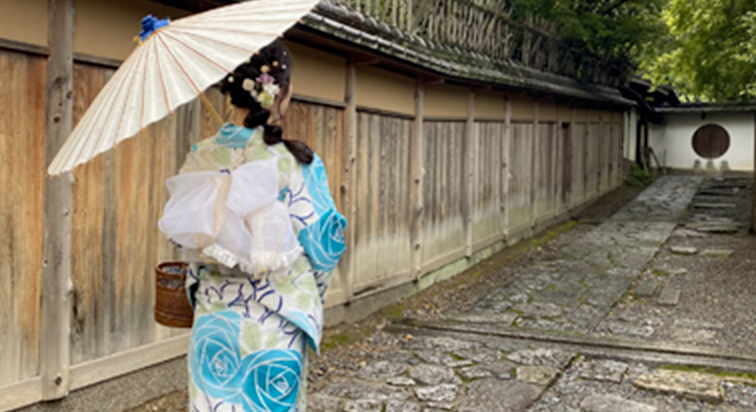
Please refer to our articles about famous tourist spots, hidden spots, and the latest information on stores in Kyoto. It is updated by our staffs who are familiar with the area.







